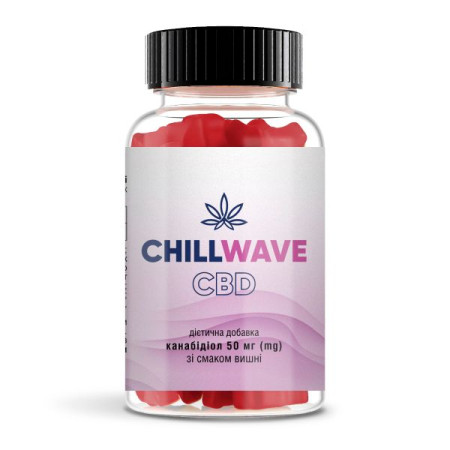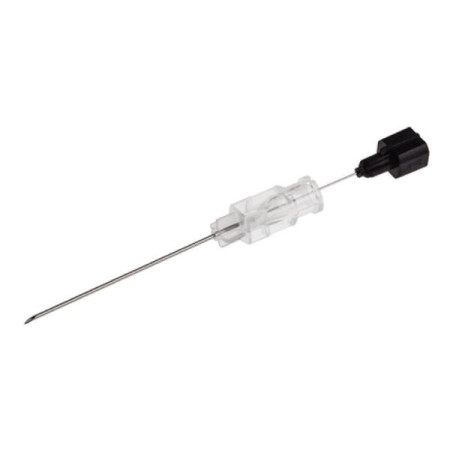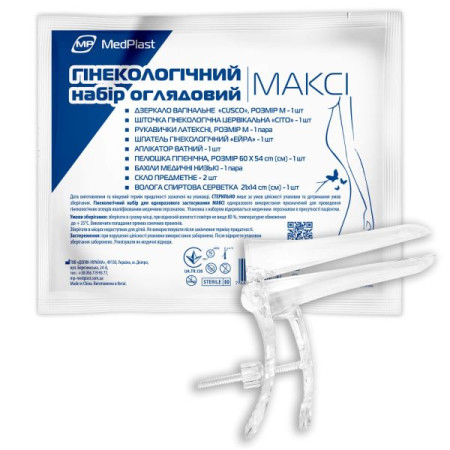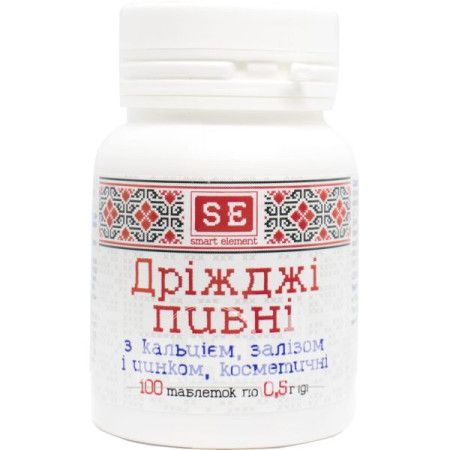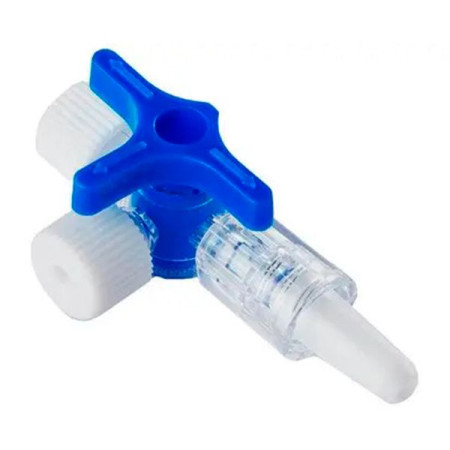Ibufen for children strawberry oral suspension 200 mg/5 ml plastic bottle with syringe-doser 100 ml

Instructions Ibufen for children strawberry oral suspension 200 mg/5 ml plastic bottle with syringe-doser 100 ml
Composition
active ingredient: ibuprofen;
5 ml of suspension contains 200 mg of ibuprofen;
excipients: hypromellose, xanthan gum, glycerin, sodium benzoate (E 211), citric acid monohydrate, sodium citrate, sodium saccharin, liquid maltitol, sodium chloride, strawberry or raspberry flavoring, purified water.
Dosage form
Oral suspension with raspberry or strawberry flavor.
Main physicochemical properties: white or almost white suspension with a uniform opalescence and a strawberry or raspberry odor.
Pharmacotherapeutic group
Nonsteroidal anti-inflammatory drugs and antirheumatic drugs, propionic acid derivatives.
ATX code M01A E01.
Pharmacological properties
Pharmacodynamics
Ibuprofen is a nonsteroidal anti-inflammatory drug (NSAID), a propionic acid derivative, which has demonstrated its effectiveness by inhibiting the synthesis of prostaglandins - mediators of pain and inflammation. Ibuprofen has analgesic, antipyretic and anti-inflammatory effects. In addition, ibuprofen reversibly inhibits platelet aggregation.
The clinical efficacy of ibuprofen has been demonstrated in the symptomatic treatment of mild to moderate pain, such as toothache, headache, and in the symptomatic treatment of fever.
The analgesic dose for children is 7 to 10 mg/kg body weight with a maximum of 30 mg/kg/day. The drug contains ibuprofen. In an open study, the onset of antipyretic action of the drug was recorded 15 minutes after its administration, and the decrease in temperature in children lasted for a period of up to 8 hours.
Experimental data suggest that ibuprofen may inhibit the effect of low-dose acetylsalicylic acid on platelet aggregation when these drugs are used concomitantly. In one study, when a single dose of ibuprofen 400 mg was taken within 8 hours before or 30 minutes after immediate-release aspirin (81 mg), a reduction in the effect of acetylsalicylic acid on thromboxane formation or platelet aggregation was observed. Although there is uncertainty about the extrapolation of the data to the clinical picture, it cannot be excluded that systematic long-term use of ibuprofen may reduce the cardioprotective effect of low-dose acetylsalicylic acid. With non-systematic use of ibuprofen, a clinically significant effect is considered unlikely.
Pharmacokinetics
No specific pharmacokinetic studies have been conducted in children. Published data suggest that the absorption, metabolism and elimination of ibuprofen in children are similar to those in adults.
After oral administration, ibuprofen is partially absorbed in the stomach, then completely in the small intestine. After metabolism in the liver (hydroxylation, carboxylation, conjugation), pharmacologically inactive metabolites are excreted completely, mainly by the kidneys (90%), as well as with bile. The half-life in healthy volunteers, as well as in patients with kidney or liver diseases, is from 1.8 to 3.5 hours. Binding to plasma proteins is about 99%.
Kidney failure.
Since ibuprofen and its metabolites are excreted primarily by the kidneys, the pharmacokinetics of the drug may be altered in patients with varying degrees of renal insufficiency. In patients with impaired renal function, lower plasma protein binding, increased plasma levels of total ibuprofen and unbound (S)-ibuprofen, higher AUC values for (S)-ibuprofen and increased enantiomeric AUC (S/R) ratios were observed compared with healthy control subjects. In patients with end-stage renal disease undergoing dialysis, the mean fraction of ibuprofen was approximately 3% compared with 1% in healthy subjects. Severe renal impairment may lead to accumulation of ibuprofen metabolites. The significance of this effect is unknown. Metabolites can be removed by haemodialysis.
Liver dysfunction.
Alcoholic liver disease with mild to moderate hepatic impairment did not significantly alter pharmacokinetic parameters. Liver disease may alter the disposition kinetics of ibuprofen. Cirrhotic patients with moderate hepatic impairment (Child-Pugh score 6-10) had an average 2-fold increase in half-life and a significantly lower enantiomeric AUC (S/R) ratio compared to healthy controls, indicating impaired metabolic inversion of (R)-ibuprofen to the active (S)-enantiomer.
Indication
Symptomatic treatment of fever and pain of various origins in children aged 6 months to 12 years with a body weight of at least 8 kg (including fever after immunization, acute respiratory viral infections, influenza, teething pain, pain after tooth extraction, toothache, headache, sore throat, pain from sprains and other types of pain, including inflammatory genesis).
Contraindication
History of hypersensitivity reactions (e.g. bronchospasm, asthma, rhinitis, angioedema or urticaria) after taking ibuprofen, acetylsalicylic acid or other NSAIDs.
History of active or recurrent gastric or duodenal ulcer/bleeding (two or more severe episodes of confirmed ulcer or bleeding).
History of gastrointestinal bleeding or perforation associated with the use of NSAIDs.
Inflammatory bowel disease in active form.
Cerebrovascular or other bleeding.
Hemorrhagic diathesis or other blood clotting disorders.
Severe heart failure (NYHA class IV), severe hepatic failure or severe renal failure.
The last trimester of pregnancy.
Severe dehydration (due to vomiting, diarrhea, or insufficient fluid intake).
Interaction with other medicinal products and other types of interactions
Ibuprofen, like other NSAIDs, should not be used in combination with:
acetylsalicylic acid, as this may increase the risk of adverse reactions, unless acetylsalicylic acid (dose not exceeding 75 mg per day) has been prescribed by a doctor. Experimental data suggest that ibuprofen may inhibit the antiplatelet effect of low doses of acetylsalicylic acid when used concomitantly. However, the limited data and the uncertainty regarding the extrapolation of ex vivo data to the clinical picture do not allow for firm conclusions regarding the systematic use of ibuprofen. Therefore, such clinically significant effects are considered unlikely with non-systematic use of ibuprofen;
with other NSAIDs, including selective cyclooxygenase-2 inhibitors.
The simultaneous use of two or more NSAIDs should be avoided as this may increase the risk of side effects.
Ibuprofen should be used with caution in combination with the following drugs:
Anticoagulants: NSAIDs may enhance the therapeutic effect of anticoagulants such as warfarin;
Antihypertensives (ACE inhibitors and angiotensin II antagonists): NSAIDs may reduce the effect of diuretics and other antihypertensive drugs. In some patients with impaired renal function (e.g. dehydrated patients or elderly patients with compromised renal function), the concomitant use of an ACE inhibitor or angiotensin II antagonist and drugs that inhibit cyclooxygenase may lead to further deterioration of renal function, including possible acute renal failure, which is usually reversible. Therefore, such combinations should be prescribed with caution, especially in elderly patients. If long-term treatment is necessary, the patient should be adequately hydrated and consideration should be given to monitoring renal function at the beginning of the combination treatment and periodically thereafter.
Corticosteroids may increase the risk of ulcers and bleeding in the gastrointestinal tract.
Antiplatelet agents and selective serotonin reuptake inhibitors: the risk of gastrointestinal bleeding may be increased.
Cardiac glycosides: NSAIDs may exacerbate heart failure, reduce glomerular filtration rate, and increase plasma glycoside levels.
Pentoxifylline: Patients receiving ibuprofen therapy in combination with pentoxifylline may have an increased risk of hemorrhage, therefore bleeding time should be monitored.
Lithium: NSAIDs may increase plasma lithium levels, possibly due to decreased renal clearance. Concomitant use of these drugs should be avoided if lithium levels are not controlled. A reduction in the lithium dose should be considered.
Methotrexate at a dose of 15 mg/week or higher: the use of NSAIDs within 24 hours before or after methotrexate administration may lead to an increase in the plasma concentration of methotrexate (it is likely that the renal clearance of methotrexate may be reduced by the effect of NSAIDs) and a further increase in its toxic effect. Therefore, the use of ibuprofen should be avoided in patients receiving high doses of methotrexate.
Methotrexate at doses below 15 mg/week: Ibuprofen increases methotrexate levels. When ibuprofen is used in combination with low doses of methotrexate, the patient's blood picture should be closely monitored, especially during the first weeks of concomitant use. Monitoring should be intensified in cases of even minimal deterioration of renal function and in elderly patients, and renal function should be monitored to prevent a possible decrease in methotrexate clearance.
Cyclosporine and tacrolimus: There is a possible increased risk of nephrotoxicity with concomitant use of NSAIDs due to decreased renal prostaglandin synthesis. Renal function should be closely monitored when these medicinal products are used concomitantly with NSAIDs.
Sulfonylureas: Interactions of NSAIDs with hypoglycemic agents (sulfonylureas) have been observed. NSAIDs may enhance the hypoglycemic effect of sulfonylureas by displacing them from plasma protein binding, therefore it is recommended to monitor blood glucose levels when sulfonylureas are used concomitantly with ibuprofen.
Probenecid and sulfinpyrazone: Increased plasma concentrations of ibuprofen and delayed elimination of ibuprofen may occur, possibly due to an inhibitory mechanism at the site of renal tubular secretion and glucuronidation; therefore, dose adjustment of ibuprofen may be required.
Baclofen: Baclofen toxicity may develop after initiation of ibuprofen.
Ritonavir: Ritonavir may increase plasma concentrations of NSAIDs.
Aminoglycosides: NSAIDs may reduce the excretion of aminoglycosides.
Captopril: experimental studies have shown that ibuprofen inhibits the sodium excretion effect of captopril.
Voriconazole and fluconazole (CYP2C9 inhibitors): A reduction in the ibuprofen dose should be considered when co-administered with potent CYP2C9 inhibitors, especially when high doses of ibuprofen are used. Studies with voriconazole and fluconazole (CYPC9 inhibitors) have shown an increase in the excretion of S(+) ibuprofen by approximately 80-100%.
Cholestyramine: When cholestyramine is administered concomitantly with ibuprofen, the absorption of ibuprofen is delayed and reduced by 25%. Ibuprofen should be administered several hours apart.
Zidovudine: There is an increased risk of haematological toxicity when zidovudine is used concomitantly with NSAIDs. There is evidence of an increased risk of haemarthrosis and haematoma in HIV-infected patients with haemophilia when zidovudine is used concomitantly with ibuprofen.
Quinolone antibiotics: Concomitant use with ibuprofen may increase the risk of seizures.
Phenytoin: ibuprofen may increase the pharmacologically active free phenytoin.
Herbal extracts: When used concomitantly with NSAIDs, ginkgo biloba may potentiate the risk of bleeding.
Hydantoins and sulfonamides: possible increase in the toxic effect of these drugs. Phenytoin plasma levels may increase with concomitant treatment with ibuprofen.
Thiazides, thiazide-like substances, loop diuretics and potassium-sparing diuretics: NSAIDs may antagonize the diuretic effect of these medicinal products. Concomitant use of NSAIDs and diuretics may increase the risk of NSAID-induced nephrotoxicity (e.g. in dehydrated patients or in elderly patients with compromised renal function) due to decreased renal blood flow. Therefore, this combination should be used with caution, especially in elderly patients. Patients should be adequately hydrated and renal function should be monitored after initiation of concomitant therapy and periodically thereafter. As with other NSAIDs, concomitant therapy with potassium-sparing diuretics may be associated with increases in potassium levels, and plasma potassium levels should be monitored.
Taking ibuprofen with food slows down absorption, although it does not affect the extent of absorption (see section "Pharmacokinetics").
Application features
Side effects associated with the use of ibuprofen and the entire group of NSAIDs in general can be reduced by using the minimum effective dose necessary to treat symptoms for the shortest period of time.
Effects on the respiratory system.
Bronchospasm may occur in patients who suffer from bronchial asthma or allergic diseases or have a history of these diseases.
Other NSAIDs.
Concomitant use of ibuprofen with other NSAIDs, including selective cyclooxygenase-2 inhibitors, increases the risk of adverse reactions and should be avoided. As with other NSAIDs, ibuprofen can cause allergic reactions, such as anaphylactic/anaphylactoid reactions, even when the drug is used for the first time.
Systemic lupus erythematosus and mixed connective tissue diseases.
Ibuprofen should be used with caution in cases of systemic lupus erythematosus and mixed connective tissue diseases due to the increased risk of aseptic meningitis.
Effects on the cardiovascular and cerebrovascular systems.
Patients with arterial hypertension and/or a history of mild to moderate congestive heart failure should be cautious when initiating long-term treatment (consultation with a doctor is necessary), as fluid retention, arterial hypertension and edema have been reported with ibuprofen therapy, as with other NSAIDs.
Patients with uncontrolled hypertension, congestive heart failure (NYHA II-III), established ischemic heart disease, peripheral arterial disease and/or cerebrovascular disease should only be treated long-term after careful consideration of risk factors. Patients with significant cardiovascular risk factors (such as hypertension, hyperlipidemia, diabetes mellitus, smoking) should only be treated long-term with NSAIDs after careful consideration and high doses of ibuprofen (2400 mg/day) should be avoided.
Cases of Kounis syndrome have been reported in patients treated with ibuprofen. Kounis syndrome is a cardiovascular syndrome characterized by narrowing of the coronary arteries in the setting of an allergic or hypersensitivity reaction, which may lead to myocardial infarction.
Effects on kidneys and liver.
Caution should be exercised in patients with renal insufficiency due to the possibility of worsening of renal function. Ibuprofen should be used with caution in patients with renal or hepatic disease, especially during concomitant therapy with diuretics, since prostaglandin inhibition may lead to fluid retention and further deterioration of renal function. In such patients, the lowest possible dose of ibuprofen should be used and renal function should be monitored regularly. In case of dehydration, adequate fluid intake should be ensured. There is a risk of renal failure in children and adolescents with dehydration.
In general, the habitual use of analgesics, especially combinations of different analgesics, can lead to long-term kidney damage with the risk of renal failure (analgesic nephropathy). The risk of this reaction is highest in elderly patients, patients with renal failure, heart failure and liver failure, and those receiving diuretics or ACE inhibitors. After discontinuation of NSAID therapy, renal function usually returns to the state observed before treatment.
Liver function may be impaired. Like other NSAIDs, ibuprofen may cause transient increases in certain liver function tests, including significant increases in AST and ALT. If these values are significantly elevated, treatment should be discontinued.
Effect on the gastrointestinal tract.
NSAIDs should be used with caution in patients with chronic inflammatory bowel diseases (ulcerative colitis, Crohn's disease) as these conditions may be exacerbated. Such patients should seek medical advice.
Cases of gastrointestinal bleeding, perforation, and ulceration, potentially fatal, have been reported at any stage of NSAID treatment, regardless of the presence of warning symptoms or a history of severe gastrointestinal disorders.
The risk of gastrointestinal bleeding, perforation, and ulceration increases with increasing doses of NSAIDs in patients with a history of ulcer, especially if complicated by bleeding or perforation, and in elderly patients. In such patients, treatment should be started at the lowest dose. Caution should be exercised when treating patients receiving concomitant medications that may increase the risk of gastrotoxicity or bleeding, such as oral corticosteroids or anticoagulants (e.g. warfarin) or antiplatelet agents (e.g. acetylsalicylic acid). In these patients, as well as in patients requiring concomitant low-dose acetylsalicylic acid or other drugs that may increase the risk of gastrointestinal complications, combination therapy with misoprostol or proton pump inhibitors should be considered.
Patients with a history of gastrointestinal disorders, especially elderly patients, should be informed of any unusual gastrointestinal symptoms (predominantly bleeding), especially gastrointestinal bleeding at the beginning of treatment. In the event of gastrointestinal bleeding or ulceration in patients receiving ibuprofen, treatment should be discontinued immediately.
Impact on fertility in women.
There is limited evidence that drugs that inhibit cyclooxygenase/prostaglandin synthesis may affect the ovulation process. This process is reversible after discontinuation of treatment.
Severe cutaneous adverse reactions (SCARs).
Severe cutaneous adverse reactions (SCARs) have been reported with ibuprofen, including exfoliative dermatitis, erythema multiforme, Stevens-Johnson syndrome (SJS), toxic epidermal necrolysis (TEN), drug reaction with eosinophilia and systemic symptoms (DRESS), and acute generalized exanthematous pustulosis (AGEP), which can be life-threatening or fatal (see section 4.8). Most of these reactions occurred within the first month of treatment.
In exceptional cases, chickenpox can cause severe skin and soft tissue infections. It is not yet possible to exclude the possibility that NSAIDs may worsen these infections, and it is therefore recommended that ibuprofen be avoided in the presence of chickenpox.
Severe acute hypersensitivity reactions (e.g. anaphylactic shock) have been observed very rarely. At the first signs of a hypersensitivity reaction after taking ibuprofen, therapy should be discontinued and a doctor should be consulted immediately.
Ibuprofen may temporarily inhibit platelet aggregation. Therefore, it is recommended to carefully monitor the condition of patients with blood clotting disorders.
With prolonged use of ibuprofen, liver function tests, kidney function, and hematological function/blood count should be regularly checked.
Prolonged use of any painkiller for headache may worsen this condition. In such cases, a doctor should be consulted and treatment should be discontinued. The possibility of drug overuse headache should be considered in patients who suffer from frequent or daily headaches despite regular use of headache medication.
The concomitant use of alcohol and NSAIDs may increase adverse reactions associated with the active substance, especially those affecting the gastrointestinal tract or central nervous system.
NSAIDs can mask symptoms of infection and fever.
Masking of symptoms of underlying infections: Ibuprofen may mask the symptoms of an infectious disease, which may delay the initiation of appropriate treatment and thus complicate the course of the disease. This has been observed in bacterial community-acquired pneumonia and bacterial complications of varicella. When ibuprofen is used for fever or for pain relief in an infection, monitoring for the presence of an infectious disease is recommended. In the setting of treatment outside a medical facility, the patient should consult a doctor if symptoms persist or worsen.
The medicinal product contains liquid maltitol and should not be administered to patients with rare hereditary problems of fructose intolerance. Due to the content of liquid maltitol, this medicinal product may have a mild laxative effect.
The drug contains sodium benzoate, so the drug may cause allergic reactions (possibly delayed).
The drug should not be prescribed to patients with rare hereditary fructose intolerance.
For use by adults, you should consult a doctor before taking this medicine in the following cases: You are pregnant, you are trying to become pregnant, you are elderly, you smoke.
Impact on laboratory test results:
- bleeding time may increase up to one day after stopping treatment;
- blood glucose concentration may decrease;
- creatinine clearance may decrease;
- hematocrit or hemoglobin may decrease;
- blood urea nitrogen concentration, serum creatinine and potassium concentration may increase;
- liver function tests: increased transaminase levels.
Use during pregnancy or breastfeeding
The drug should be used in children under 12 years of age.
Pregnancy.
Inhibition of prostaglandin synthesis may adversely affect pregnancy and/or embryonal/fetal development. Epidemiological studies have shown an increased risk of miscarriage and birth defects following exposure to prostaglandin synthesis inhibitors in early pregnancy. The risk appears to increase with dose and duration of treatment. The absolute risk of cardiovascular malformations increased from less than 1% to approximately 1.5%. The risk increases with dose and duration of treatment.
From the 20th week of pregnancy, the use of Ibufen® Forte may cause oligohydramnios as a result of fetal renal dysfunction. Impaired renal function may occur almost immediately after initiation of treatment and is usually reversible after discontinuation of ibuprofen treatment. In addition, narrowing of the ductus arteriosus has been reported after treatment in the second trimester of pregnancy, which disappeared after discontinuation of treatment. Therefore, ibuprofen should not be taken during the first two trimesters of pregnancy unless, in the opinion of the physician, the expected benefit to the patient outweighs the potential risk to the fetus. If ibuprofen is used by a woman attempting to conceive or during the first and second trimesters of pregnancy, the lowest possible dose should be used for the shortest possible time. It may be advisable to monitor antenatally for oligohydramnios and narrowing of the ductus arteriosus after ibuprofen has been used for several days from the 20th week of pregnancy. Ibuprofen should be discontinued if signs of oligohydramnios or narrowing of the ductus arteriosus are observed.
During the third trimester of pregnancy, all prostaglandin synthesis inhibitors may pose the following risks:
for the mother at the end of pregnancy and the newborn: increased bleeding time, antiplatelet effect, which may develop even at very low doses; suppression of uterine contractions, leading to delayed or prolonged labor.
There may be an increased risk of edema in the mother.
Therefore, ibuprofen is contraindicated during the third trimester of pregnancy.
Breastfeeding. Ibuprofen and its metabolites are excreted in breast milk in low concentrations. No adverse effects on the infant are known, so for short-term treatment of pain and fever at recommended doses, it is usually not necessary to discontinue breastfeeding.
Fertility.
There is evidence that drugs that inhibit cyclooxygenase/prostaglandin synthesis may impair female fertility by affecting ovulation. This effect is reversible upon discontinuation of treatment.
The use of ibuprofen is not recommended in women attempting to conceive. In women who have difficulty conceiving or who are undergoing investigation of infertility, discontinuation of the drug should be considered.
Ability to influence reaction speed when driving vehicles or other mechanisms
Patients who experience dizziness, vertigo, visual disturbances or other central nervous system disorders when taking ibuprofen should avoid driving or operating other machinery during therapy with this drug.
No special precautions are required when using a single dose of ibuprofen or for a short period of time.
Method of administration and doses
Side effects can be minimized by using the lowest effective dose necessary to control symptoms for the shortest period of time.
For oral use. A single dose of ibuprofen is usually 5 to 10 mg/kg body weight. The recommended daily dose of the drug is 20–30 mg per 1 kg of body weight, divided into equal doses, the interval between doses is 6–8 hours. To ensure accurate dosing, use the syringe-doser included in the package. Do not exceed the recommended dose. For short-term use only. Shake before use.
Age Body weight (kg) | Dosage | Frequency of administration per day |
Children 6–12 months (8–10 kg) | 1.25 ml (50 mg) | 3–4 times |
Children 1–3 years old (10–15 kg) | 2.5 ml (100 mg) | 3 times |
Children 3–6 years old (15–20 kg) | 3.75 ml (150 mg) | 3 times |
Children 6–9 years old (20–30 kg) | 5 ml (200 mg) | 3 times |
Children 9–12 years old (30–40 kg) | 7.5 ml (300 mg) | 3 times |
If your child's symptoms persist for more than 3 days after starting treatment or worsen, you should consult a doctor.
Patients with sensitive stomachs should take the drug with meals.
Special categories of patients:
NSAIDs should be used with caution in patients with renal impairment, as ibuprofen is primarily excreted by the kidneys. Lower doses should be used in patients with mild to moderate renal impairment.
Ibuprofen should not be used in patients with severe renal impairment (see section "Contraindications").
Although no differences in the pharmacokinetic profile of ibuprofen have been observed in patients with hepatic impairment, NSAIDs should be used with caution in such patients. Patients with mild to moderate hepatic impairment should be started on low doses and closely monitored. Ibuprofen should not be used in patients with severe hepatic impairment (see section 4.3).
Patients should consult a doctor if symptoms persist or worsen during treatment.
If you use a dose that exceeds the recommended dose, you should immediately consult a doctor.
Children. The drug is used in children from 6 months of age, whose body weight is at least 8 kg, up to 12 years.
Instructions for using the syringe dispenser.
Unscrew the cap on the bottle (press down, turn counterclockwise).
Press the dispenser firmly into the opening of the bottle neck.
Shake the contents of the bottle vigorously.
To fill the dispenser, turn the bottle upside down, then carefully move the dispenser piston down and pour the contents to the desired mark on the scale.
Turn the bottle back to its original position and remove the dispenser by carefully unscrewing it.
Place the tip of the dispenser in the child's mouth, and then, slowly pressing the piston, pour in the contents of the dispenser.
After use, the bottle should be closed, the cap tightened, and the dispenser rinsed with water and dried.
Overdose
Symptoms. In most patients in clinical trials, the use of significant amounts of NSAIDs caused only nausea, vomiting, epigastric pain, and, less commonly, diarrhea. Tinnitus, headache, dizziness, and gastrointestinal bleeding may also occur. In more severe poisoning, toxic lesions of the central nervous system may occur, manifested as drowsiness, nystagmus, visual disturbances, sometimes - an excited state and disorientation or coma. Sometimes patients have convulsions. In severe poisoning, hyperkalemia and metabolic acidosis, an increase in prothrombin time/INR (probably due to interaction with circulating blood clotting factors), acute renal failure, liver damage, arterial hypotension, respiratory failure, and cyanosis may occur. Patients with bronchial asthma may experience an exacerbation of asthma.
Treatment. There is no specific antidote. Treatment should be symptomatic and supportive, and include maintaining a patent airway and monitoring vital signs until the condition returns to normal. Oral administration of activated charcoal or gastric lavage is recommended within 1 hour of ingestion of a potentially toxic dose. If ibuprofen has already been absorbed, alkaline agents may be administered to accelerate the excretion of acidic ibuprofen in the urine. Frequent or prolonged muscle spasms should be treated with intravenous diazepam or lorazepam. Bronchodilators should be used in the case of bronchial asthma. Medical advice should be sought.
Adverse reactions
The most common adverse reactions are gastrointestinal and are mostly dose-dependent. Adverse reactions are rare when the maximum daily dose is 1200 mg.
Adverse reactions that have occurred with ibuprofen are listed below by system organ class and frequency of occurrence. The frequency of adverse reactions is defined as follows: very common (≥1/10), common (≥1/100 to <1/10), uncommon (≥1/1,000 to <1/100), rare (≥1/10,000 to <1/1,000), very rare (<1/10,000), not known (cannot be estimated from the available data). Within each frequency grouping, adverse reactions are presented in order of decreasing seriousness.
Infections and invasions.
Very rare - exacerbation of inflammation associated with infection (for example, development of necrotizing fasciitis, in exceptional cases, chickenpox can cause severe infectious complications of the skin and soft tissues).
From the side of the cardiac system.
Very rare - heart failure, edema; very rare - tachycardia, myocardial infarction.
Clinical studies show that the use of the drug, especially at high doses (2400 mg per day), may be associated with a small increased risk of arterial thrombotic complications (e.g. myocardial infarction or stroke) (see section "Special warnings and precautions for use").
Frequency unknown – Kounis syndrome.
From the digestive tract.
Common: abdominal pain, dyspepsia and nausea; rare: diarrhoea, flatulence, constipation, heartburn, vomiting and minor gastrointestinal bleeding, which in exceptional cases can lead to anaemia; uncommon: gastric and duodenal ulcers, perforations or gastrointestinal bleeding, melena, haematemesis, sometimes fatal (especially in elderly patients), ulcerative stomatitis, gastritis, exacerbation of colitis and Crohn's disease; very rare: esophagitis, formation of diaphragmatic strictures of the intestine, pancreatitis, duodenitis.
From the nervous system.
Uncommon - headache; rare - dizziness, insomnia, fatigue, irritability, irritability; very rare - aseptic meningitis, some symptoms of which (rigidity of the occipital muscles, headache, nausea, vomiting, fever or disorientation) may occur in patients with existing autoimmune diseases, such as systemic lupus erythematosus, mixed connective tissue disease; frequency unknown - paresthesia, drowsiness.
On the part of the kidneys and urinary system.
Rarely – acute renal failure, papillary necrosis,
There are no reviews for this product.
There are no reviews for this product, be the first to leave your review.
No questions about this product, be the first and ask your question.










